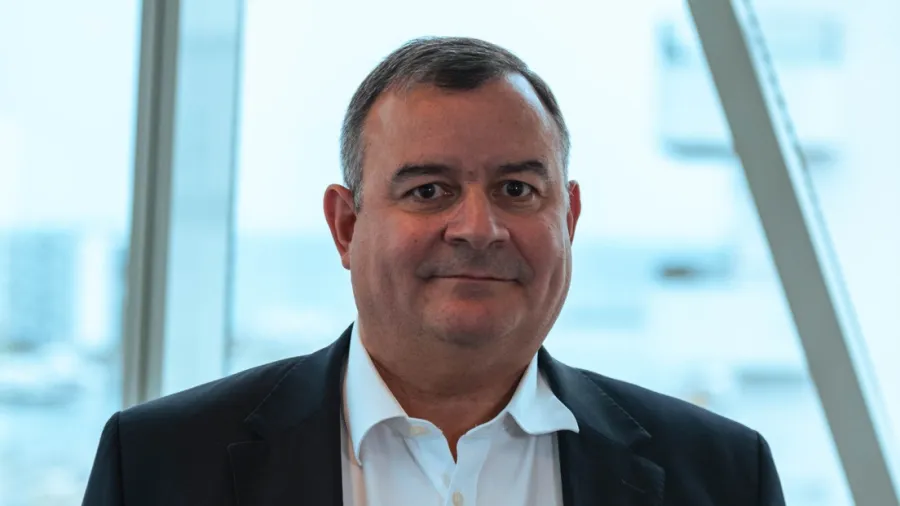
Saxo CEO stresses digital wealth’s key role in investment access
The wealthtech industry is expected to skyrocket its ‘onshore’ PFA of around $81t (SG$108.27t/HK$632.82t) by 2027, driven by Singapore and Hong Kong markets.
At its nascent stage in the Asia Pacific region, wealth technology (wealthtech) confronts a market where approximately 40% to 45% of personal financial assets (PFA) are held in cash and deposits, according to a McKinsey & Co. report.
What’s to watch out for is how wealthtechs in Asia will navigate the fast-evolving landscape of democratising financial advice.
As they strive to offer “advice for all,” the key challenge for wealthtech lies in striking a balance between innovation, inclusivity, and maintaining operational efficiency. Success will hinge on their ability to tailor technology-driven solutions that resonate with a diverse clientele whilst ensuring sustainable growth in an ever-evolving market.
Adam Reynolds, the CEO of Saxo in Asia, believes that in 2024, many financial companies will join forces through consolidation. Speaking to Asian Banking & Finance at the Singapore Fintech Festival 2023, Reynolds said this merging process will give these companies a better chance of success in the competitive financial industry.
He emphasised the industry’s pivotal role in enhancing financial literacy and contributing to the long-term financial health of populations.
Reynolds said that as the market expands, economies of scale are likely to favour larger players. “The size of the market will grow and that will bring economies of scale to the bigger players as they consolidate more. With most industries, the big will get bigger, the big will get better, the big will have economies of scale, and the big will become profitable,” he asserted.
For this to happen, he sees big wealthtech players “very, very focused on improving, and educating clients, which is what their number one function is.” Side-by-side with this relentless focus on client education would be diversifying investment options for their clients, Reynolds added.
Data being presented by McKinsey & Co. point to the growing influence of wealthtech — which can be any technology-enabled wealth financial technology that facilitates distribution, manufacturing, and post-trade and back-office activities throughout the wealth management value chain.
According to McKinsey & Co., it anticipates an estimated “onshore” PFA of around $81t (SG$108.27t or HK$632.82t) by 2027, translating to roughly $1t (SG$1.33t or HK$7.81t) in revenue pools across the wealth continuum.
The rise in “cross-border wealth management connectivity” is evident, with increasing flows to the key Asian booking centres, specifically Hong Kong and Singapore. This influx is projected to account for approximately $3.5t (SG$4.68t or HK$27.34t) in booked assets by 2027.
Moreover, wealth management is not solely confined to accumulation; there is a growing need for decumulation, especially in emerging countries, as individuals in the region express a heightened demand for a retirement corpus.
Reflecting on the past, wealth management services traditionally targeted the high-net-worth individual (HNWI) market. Nevertheless, the share of the affluent segment is expanding, expected to reach 34% of onshore PFA by 2027, with a projected Compound Annual Growth Rate (CAGR) of 8% from 2022 to 2027. This segment remains notably untapped and underserved, with a wealth management penetration as low as 15% to 20%, as of the publication date.
Continuous innovation and client-centric approach
Saxo recognises the paramount importance of the digital wealth segment in democratising access to investment advice. Reynolds said the challenge lies in acquiring clients, creating bespoke investment portfolios, and efficiently managing operational complexities behind the scenes.
“The innovation required is often a choice of where do you innovate? Do you innovate for a better client experience, a superior portfolio mechanism, or more efficient back-office systems? Every platform is grappling with this choice,” Reynolds told.
Saxo has positioned itself as a strong outsourcing option, alleviating partners from the operational burden and allowing them to focus on innovating in client experience and portfolio performance.
In terms of small and medium enterprises (SMEs), Reynolds acknowledged some unique challenges like shorter investment horizons requiring lower-risk portfolios.
“If you’re investing over a longer period, then the ability to recover from a drawdown is much longer. It makes sense to invest in a more risky portfolio of stocks and bonds — a risky portfolio like crypto, but a higher stock percentage in your allocation,” he explained in general.
It’s a different case for SMEs. “If they have cash — which they may need to use in the next couple of years — they should be at lower risk (investments). I think they need a different type of portfolio and I’m not sure if anyone is really catering for that yet,” Reynolds said.
The strategic dilemma of building versus buying technology is a common prioritisation among wealth management firms. Prioritising better client journeys, effective communication, and portfolio performance, they tend to outsource the complex backend systems.
“It’s nuts trying to build their broker servers. Hence, outsourcing is crucial for scalability,” said Reynolds.
Market dynamics and cost efficiency
Examining factors influencing decision-making, Reynolds identified client acquisition and development costs as major challenges.
Predicting industry consolidation, he told Asian Banking & Finance that larger players will prevail, and smaller players may need to merge or be acquired for sustainability.
As banks improve their digital capabilities, collaboration with independent players becomes crucial.
“The independent players are better at this, so I do see that some banks will try and build it for themselves. That’s where we partner with some of those banks. I do see that maybe some of the smaller ones may not make it but others may merge or be acquired by one of the other ones,” Reynolds concluded.


















 Advertise
Advertise








